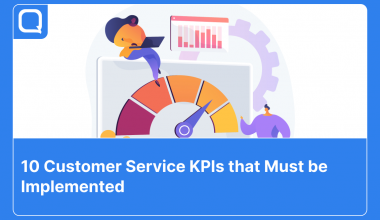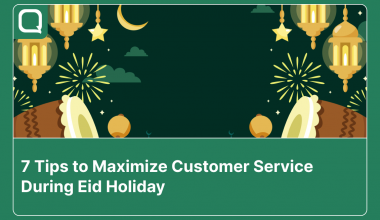Live chat is expected to grow by as much as 87% in the next 12 to 18 months from now. The reason why live chat will expand so quickly is because more than half of all customers prefer using a platform that allows them to chat in real-time rather than calling a company’s customer service helpline[1].
In line with the facts above, live chat has become the most popular method for customer support. About 42% of customers prefer live chat compared to just 23% who would rather use email, and 16% who choose social media or forums.
This is because live chat tends to give the impression that any enquiries will be answered more quickly. Customers would prefer to speak directly with the business owner in order to build trust.
On the other hand, companies would benefit from live chat activities because they are able to understand their customers better by speaking with them directly in a real-time chat.
Hence, they can evaluate their products based on immediate user feedback. In a nutshell, implementing live chat within systems will bring opportunities for businesses.
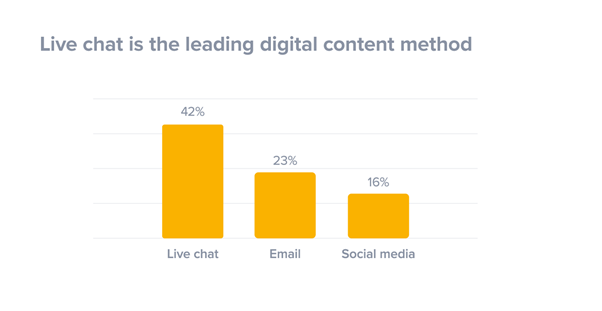
However, you may be wondering whether embedding live chat in your business platform will drain your budget or not. Technically, there are two approaches that you can choose from in order to own a live chat feature within your app.
You can either engage a technical engineer to build it from scratch or use a third-party service provider who can provide a live chat product and embed it into your platform. We will discuss the distinctions between the two options so that you can choose wisely.
What Should I Consider When Creating Live Chat?
Live chat refers to a two-way, back-and-forth conversation that a user can experience within your app with a customer representative. Usually, this conversation is initiated by the user because he or she needs help, has a question, or wants to report an issue.
In this way, live chat works to assist users by providing efficient and accessible customer support which is a powerful reason for creating a chat feature within your app. The main aim to embed a live chat is to gain more engagement with your apps users.
Creating a live chat by yourself may sound doable but behind the decision to build your own live chat feature, you should consider the capabilities you would need to build a chat feature and also your team’s capacity to build it.
For example, you may gather a requirement of a chat feature and you may want anyone to be able to chat with that feature in real-time without any delay. To make this happen, we should plan for the software infrastructure of our app, the server, and even people who can code and handle the technology. Moreover, we should consider the costs and whether or not it meets our budget.
Here, we will list some essential things you may want to consider before deciding to build your own chat feature from scratch[2].
1. Chat Infrastructure
Live chat is a platform where customers expect their problems to be addressed and solved. To solve problems faster and to make the context clearer, they sometimes need to attach any files such as images, documents, and even audio files. To establish this feasibility, you should consider building in a multiple-file support feature.
Thus, it is necessary for your chat feature to support various file attachments. Remember, your goal in building an in-app chat is to solve customers’ problems faster in using your app and then make your app as the main option which leads to increased customer loyalty.
To build the chat feature from scratch, the first thing you need to consider is the chat infrastructure. It is how you can make it function in real-time, how you store chat history with multiple file attachments, and so forth.
Moreover, this also includes any specifications and customizations that are needed to be embedded into your chat, such as end-to-end encryption, in order to increase the security or chat bot to automate answering Frequently Asked Questions (FAQ).
To consider the complexity of building a chat infrastructure, below we have listed the range of technology that you may most likely need:
-
Server + Load Balancer + Auto Scaling:
Amazon CloudWatch Dashboards $3.00 per dashboard per month + $0.0252 per Application Load Balancer-hour (or partial hour)+ $0.008 per LCU-hour (or partial hour)[3]
-
Network Traffic [4]:
First 10 TB/month $0.15/GB
Next 40 TB/ month $0.11/GB
Next 100 TB/ month $0.09/GB
Over 150 TB/month $0.08/GB
-
Database[5]:
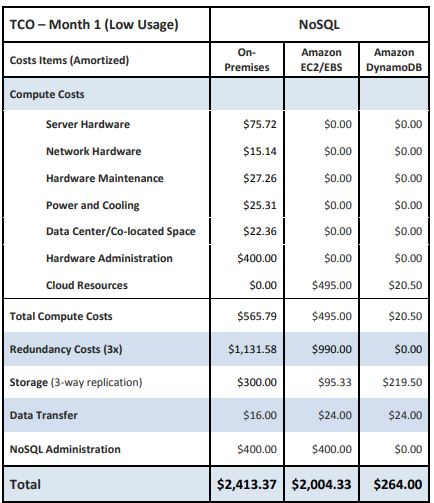
-
File storage:[6]
First 50 TB/month $0.023 per GB
Next 450 TB/month $0.022 per GB
Over 500 TB/month $0.021 per GB
-
Cache[7]:
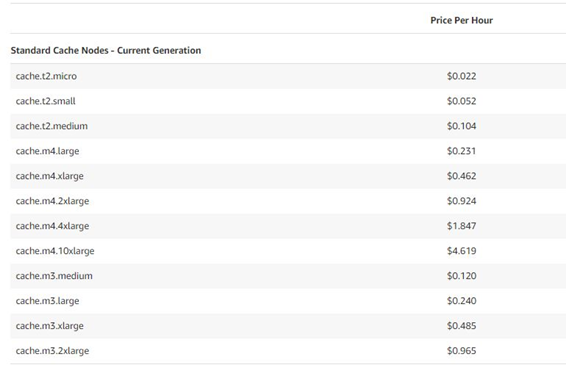
-
Real-time Notification and Signalling[8]:
Simultaneous connections: 100k/database
- GB stored : $5/GB
- GB downloaded: $1/GB
-
Monitoring, Logging and Analytic[9]:
$125.00/month. Based on estimated CU total of 2500 CU *
(* A CU (compute unit) = (CPU Cores + GB RAM) x hours used)
-
SSL certificate- 1 Site Web+ Subdomain[10]
$238.63/year
Looks complicated? Wait and keep scrolling down, then we will discuss other different types of costs you will need to build your own.
2. Types of Costs
The next most important thing that must be considered, besides technological readiness, is the costs of building live chat3. We will first discuss what costs you will incur specifically.
-
Development Costs
Time is money. Every hour of work done by an employee is cost incurred, whether it is for the salary and overheads. However, don’t forget to calculate how much time is spent in developing an in-house project when it can be used to finish other projects from clients that will make money for the company. Thus, it would be the most important thing you must consider. The development costs consist of:
– Chat server: Proprietary, Open source, Commercial solution
– Network layer: WebSocket, HTTP long-polling, TCP socket
– Messaging protocol: Proprietary, XMPP, MQTT
– Client platform: iOS, Android, Web (JavaScript), React Native, Ionic
– Required level of encryption due to security policy and internal compliance
-
Consultation Costs
Sometimes, not all development teams are experienced in developing chat. It may take your developer many times longer to do the work. It makes sense to use consultants when you don’t have the relevant expertise in your team. Thus, consultation costs will be incurred.
-
Hosting Costs
The chat feature will certainly require a lot of memory on the server that will require you to provide a new server to store all data traffic that will run both in your application and in the chat feature itself. Talking about servers for chat features, different sizes of hosting capacities are available in the market with varying price ranges (in per GB of data) which starts from $1.5 to over $200!
-
Running Chat in Applications = Integrating Costs
There will always be a cost associated with integrating messaging within your app. You will need to make changes to your server to accommodate the chat functionality and build a messaging user interface (UI). Some companies may not offer any kind of UI framework while others may offer basic UI components. Some may still have full open source demo apps. This should be taken into account.
-
Unexpected Costs
Unexpected costs here are those caused by unpredictable factors that are beyond our control, such as:
– Vendor lock-in
– Opportunity costs
– Vendors selling your users’ data
– Vendors going out of business
– Lack of flexibility in your host mobile’s SDK preventing you from adding important features
– Issues with scaling
Although unexpected, they are real and you will need to estimate the costs before you start to decide to build your own in-app chat. Building an in-app chat by yourself may seem like a good idea, but don’t forget to pay attention to the whole process, including the cost and time.
Also read: “Kiwari X Telkom: Changing How Employees Connect and Communicate“
How about Using a Third-Party Service Provider?
There are two options with regards to using a third-party service provider:
- The service refers to a provider, which offers you a messaging SDK product, which is integrated within your app for free. They will also provide you with a capped amount of free messages. After which if exceeded, the third party will charge you via a per month active user (MAU).
- The service refers to vendors who have capable human resource to develop this technology. This means providers offer self-hosted chats and will charge you the first time as a payment for their messaging solution. They may also charge you with a consultation fee and a fee for integration of the chat feature into your app. They will then charge you for the number of active users for the month (MAU) but at a hundred times lower price than another one offered options (service refers to provider).
What about time then? Without talking about which options you will choose, by using third party services, you will save the time you need to make your own chat.
Which is Better?
It depends on your needs. Surely, the most important thing is determining which is more effective and efficient for your company. It’s important to calculate all the costs you will incur and also consider the urgency of having a chat feature in your app before deciding on a messaging solution. The following is a list of items that you will need to consider further[11]:
- Will the hosting costs increase significantly when my app scales?
- Do I need to build my own chat UI?
- How difficult is it to integrate with the current messaging service?
- Can I migrate my users if necessary?
- Will the hosting company sell my users’ data?
- How flexible is the service?
- What is the probability that they will still be around one to five years down the road?
- What will the consulting and licensing fees be?
Considering the points mentioned above can help you to determine your decision. Always think about appropriate solutions to meet the needs and bring out the potential of your company.
[1] https://www.superoffice.com/blog/live-chat-statistics/
[2] https://blogs.qiscus.com/chat-feature-dilemma/
[3] https://aws.amazon.com/cloudwatch/pricing/
[4] https://aws.amazon.com/blogs/aws/aws-data-transfer-prices-reduced/
[5] https://media.amazonwebservices.com/AWS_TCO_DynamoDB.pdf
[6] https://aws.amazon.com/s3/pricing/
[7] https://aws.amazon.com/elasticache/pricing/
[8] https://firebase.google.com/pricing/
[9] https://newrelic.com/application-monitoring/pricing
[10] https://id.godaddy.com/web-security/ssl-certificate/wildcard-ssl-certificate

